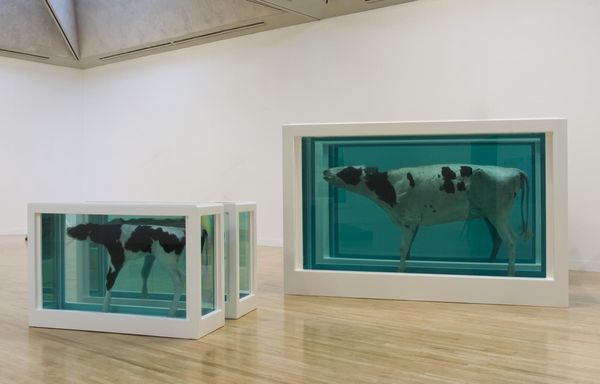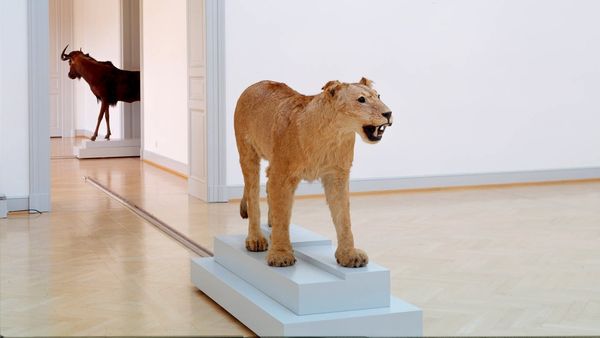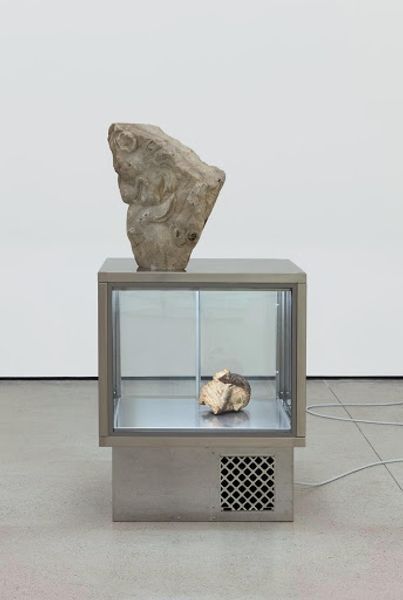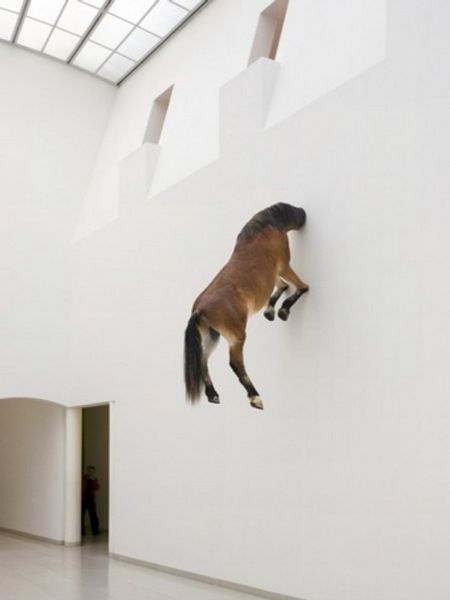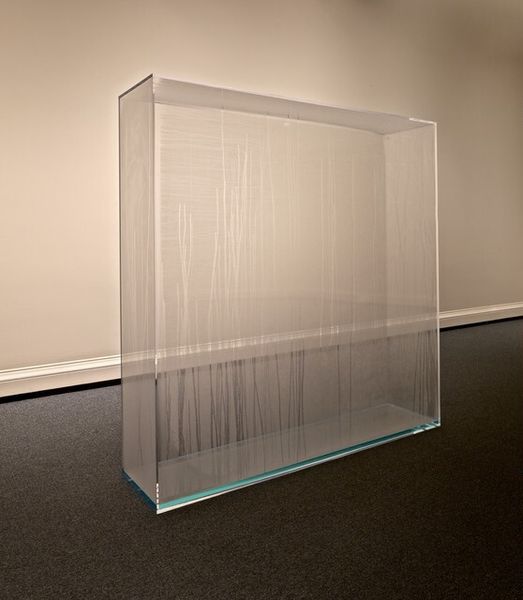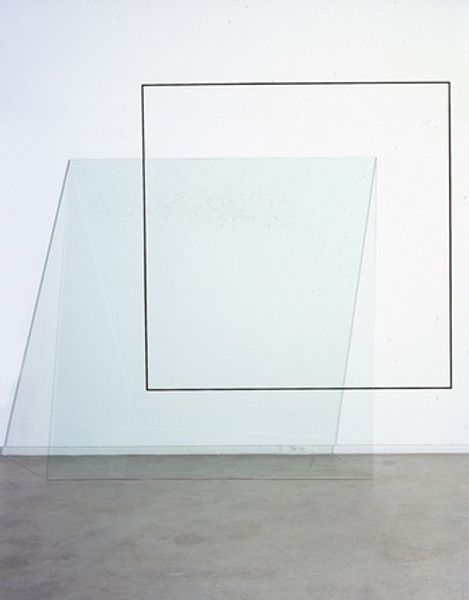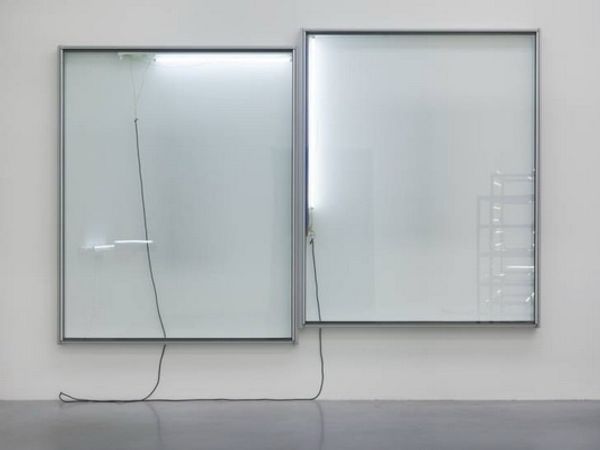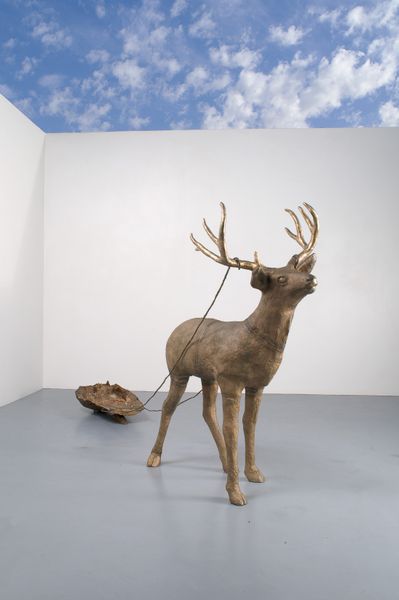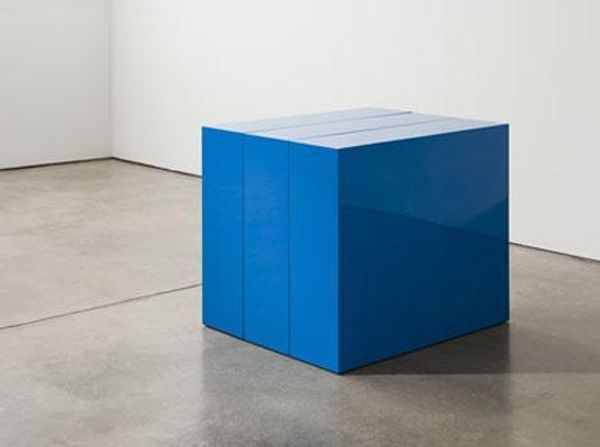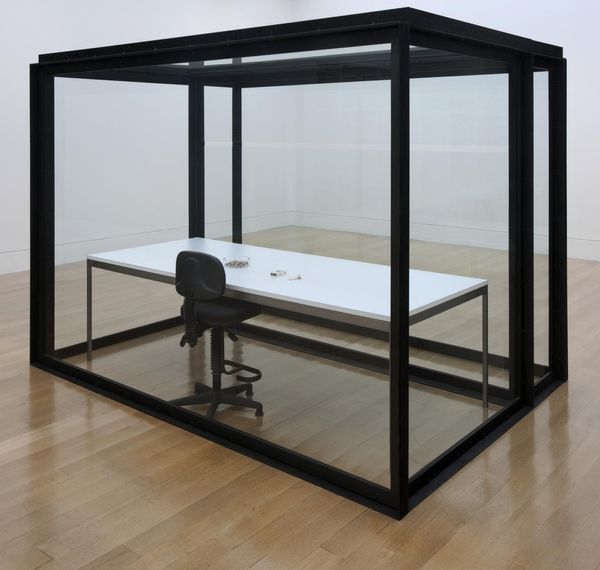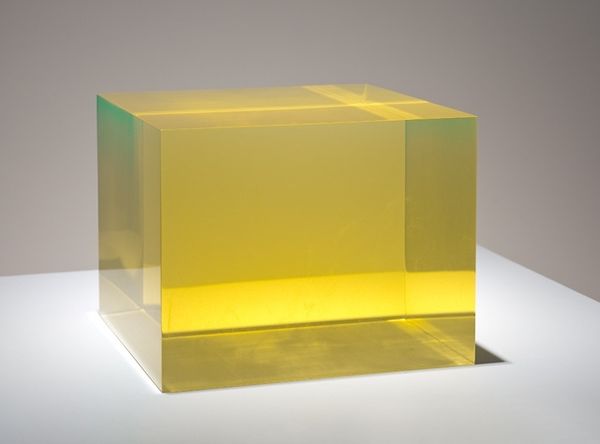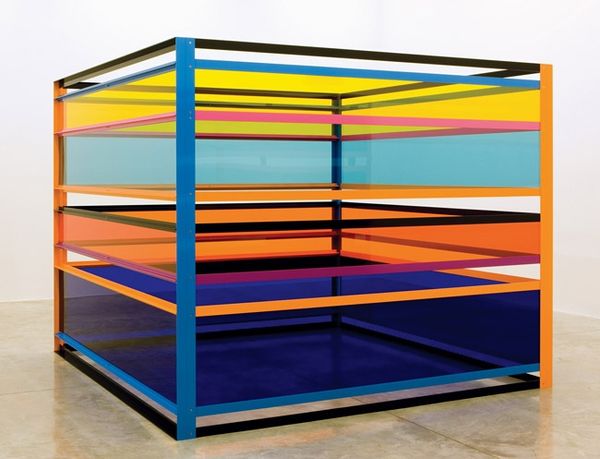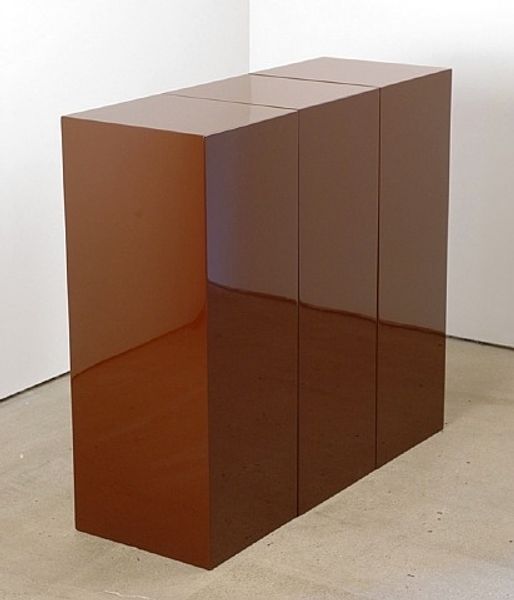
Dimensions: displayed: 960 x 1490 x 510 mm
Copyright: © Damien Hirst and Science Ltd. | CC-BY-NC-ND 4.0 DEED, Photo: Tate
Editor: Here we have Damien Hirst's *Away from the Flock*, featuring a lamb suspended in formaldehyde within a glass and steel vitrine. It's strangely serene. What do you see in this piece? Curator: I see a stark commentary on commodification. The lamb, once a symbol of innocence, is now a manufactured object, preserved and presented for consumption. Consider the labor involved: from raising the animal to the industrial processes of preservation and display. Editor: So, the piece isn't just about death, but about the processes that lead to it being displayed in this way? Curator: Precisely. It questions the cultural and economic systems that transform living beings into commodities for aesthetic or intellectual consumption. The materials speak volumes. Editor: I never thought about it that way. Thanks, I have a lot to consider. Curator: You're welcome, examining the materials and processes always adds new insight.
Comments
tatebritain 8 months ago
⋮
http://www.tate.org.uk/art/artworks/hirst-away-from-the-flock-ar00499
Join the conversation
Join millions of artists and users on Artera today and experience the ultimate creative platform.
tatebritain 8 months ago
⋮
Away from the Flock is a floor-based sculpture consisting of a glass-walled tank filled with formaldehyde solution in which a dead sheep is fixed so that it appears to be alive and caught in movement. Thick white frames surround and support the tank, setting in brilliant relief the transparent turquoise of the solution in which the sheep is immersed. Away from the Flock is unusual for a Hirst sculpture in that it exists in three versions, all created the same year, of which ARTIST ROOM’s is the third. The principal difference between the three versions (reproduced together Hirst and Burn, pp.84–5) is that the sheep in the first version has an entirely black head and its forelegs are raised further off the floor of the tank, so that it appears to be arrested mid-jump. The sheep in versions two and three are more similar in appearance and in pose; ARTIST ROOM’s sheep has less black on its head and a pinker tinge in the rest of its wool than the others.
